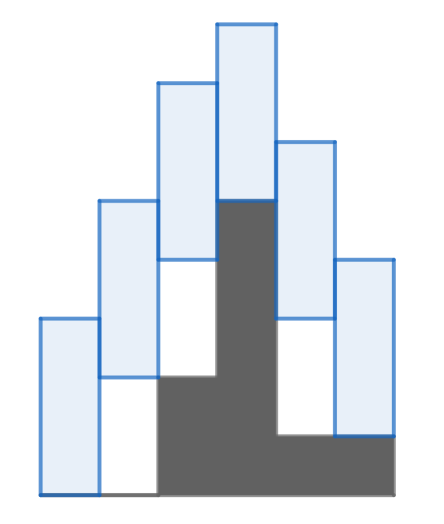Preparando MOJI
You want to build a fence that will consist of $$$n$$$ equal sections. All sections have a width equal to $$$1$$$ and height equal to $$$k$$$. You will place all sections in one line side by side.
Unfortunately, the ground beneath the fence is not flat. For simplicity, you can think that the ground level under the $$$i$$$-th section is equal to $$$h_i$$$.
You should follow several rules to build the fence:
 One of possible fences (blue color) for the first test case
One of possible fences (blue color) for the first test case Is it possible to build a fence that meets all rules?
The first line contains a single integer $$$t$$$ ($$$1 \le t \le 10^4$$$) — the number of test cases.
The first line of each test case contains two integers $$$n$$$ and $$$k$$$ ($$$2 \le n \le 2 \cdot 10^5$$$; $$$2 \le k \le 10^8$$$) — the number of sections in the fence and the height of each section.
The second line of each test case contains $$$n$$$ integers $$$h_1, h_2, \dots, h_n$$$ ($$$0 \le h_i \le 10^8$$$), where $$$h_i$$$ is the ground level beneath the $$$i$$$-th section.
It's guaranteed that the sum of $$$n$$$ over test cases doesn't exceed $$$2 \cdot 10^5$$$.
For each test case print YES if it's possible to build the fence that meets all rules. Otherwise, print NO.
You may print each letter in any case (for example, YES, Yes, yes, yEs will all be recognized as positive answer).
3 6 3 0 0 2 5 1 1 2 3 0 2 3 2 3 0 2
YES YES NO
In the first test case, one of the possible fences is shown in the picture.
In the second test case, according to the second rule, you should build both sections on the corresponding ground levels, and since $$$k = 3$$$, $$$h_1 = 0$$$, and $$$h_2 = 2$$$ the first rule is also fulfilled.
In the third test case, according to the second rule, you should build the first section on height $$$3$$$ and the third section on height $$$2$$$. According to the first rule, the second section should be on the height of at least $$$2$$$ (to have a common side with the first section), but according to the third rule, the second section can be built on the height of at most $$$h_2 + k - 1 = 1$$$.